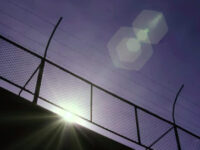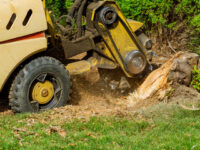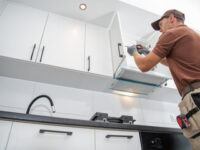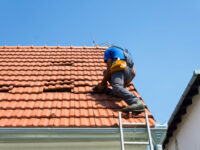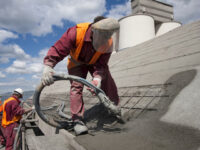Chimney Cap Repair
A chimney cap protects a roof from water damage, debris, and unwanted animals. It also prevents sparks from leaving the chimney and igniting nearby combustibles like rooftops or surrounding trees.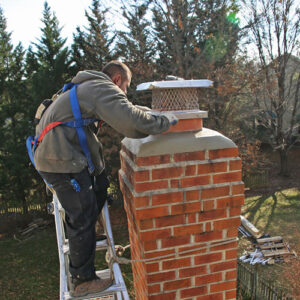
Chimney caps sit on top of the chimney stack, and they serve a few important functions. They prevent rain, snow, and debris from getting into the chimney, and they keep hot embers from causing a fire that could threaten your home. A well-functioning chimney cap is a worthwhile investment for your home.
A new chimney cap is typically made of copper or stainless steel, and it will cost you between $250 and $800. The material you choose will determine its durability, curb appeal, and longevity. The copper models tend to be the most expensive due to their impressive durability and aesthetics.
You may also need to tuckpoint or parge your fireplace as part of the chimney cap installation process, and these additional services will cost you an additional $550 to $2500. Tuckpointing involves filling in and patching up deteriorated mortar to improve your chimney’s look, while parging is the application of a fresh coat of mortar to your brick to reduce the accumulation of creosote, a tar-like substance that is created when smoke combines with air.
Having an intact chimney cap is also important because it helps prevent animals from entering the flue. Snakes, squirrels, birds, and other critters are drawn to uncapped chimneys, where they can build nests that block the flow of smoke or even poison your family with carbon monoxide. The animal will usually die in the chimney and leave behind a foul odour. Chimney caps with mesh siding can keep out these pests, and you won’t have to worry about your children or pets chasing them around the yard after a raccoon or bird enters the house.
Chimney caps should only be installed by a professional, and the cost to have this done depends on the roof’s condition. It’s best to do this work in the cool months, when it’s safe and not so hot that walking on the roof will damage shingles or membranes. It’s also best to have this done before the chimney crown or flue gets damaged by weather, a fire, or animals. A chimney cap is an excellent addition to a chimney, and it can help prevent costly repairs in the future.
Materials
The chimney flue is a vent that allows smoke, heat, and gases to leave your home. But that open space at the top of the chimney also makes for an excellent channel for rainwater, melted snow, and debris to enter your house. A chimney cap seals off this opening, preventing precipitation from entering the chimney and causing moisture-related damage.
Chimney caps come in a variety of sizes and materials. The most affordable option is galvanized steel, which costs between $25 and $200 for a single chimney cap. Aluminium is also an inexpensive option and provides similar durability as galvanized steel. Stainless steel is more expensive, but it offers a superior level of durability and curb appeal. Copper is the most expensive chimney cap material, but it’s also one of the most durable and attractive.
Regardless of the chimney cap’s material, it should be made to withstand extreme weather conditions and temperature fluctuations. The best way to do this is to construct the chimney cap using concrete rather than mortar. This helps the chimney cap withstand heat exposure and moisture better than masonry, which may crack or crumble over time. In addition, the concrete should be poured with a 1/4″ separation between the chimney crown and the flue tile. This will prevent moisture from damaging the flue tiles and concrete crown through a series of freeze-thaw cycles.
Chimney caps are essential for protecting the chimney from weather and animals. If a chimney is uncapped, wild animals like squirrels, raccoons, birds, and snakes can gain entry to the chimney and contaminate the surrounding area with their droppings. Animals that are unable to escape a chimney often die inside, which creates a foul odour and can lead to the spread of disease.
Installation
Chimney caps help reduce moisture inside a chimney. Moisture can cause rust or damage to chimney liners, dampers, and even the chimney itself. It can also increase the risk of a chimney fire. Chimney caps also help to keep sparks and embers from drifting out onto the roof and causing a house fire.
A good-quality chimney cap will be made of copper or stainless steel and will be a snug fit. It should not be able to fall off easily, but it can be tightened with a special tool. Many homeowners choose to install a chimney cap themselves instead of paying a professional. You will need a ladder, a screwdriver, and the proper materials for the job.
Before you begin, make sure that you know the dimensions of your chimney flue. Measure the combined length and width, or diameter, of the flue, and take a height measurement as well. This will help you purchase a chimney cap that fits the size of your flue perfectly. You should avoid buying one-size-fits-all chimney caps, as they will not work properly.
Start by removing the old chimney cap. If you are not a professional, this is likely to be a messy project, and you should wear gloves when handling the creosote that accumulated on the top of the chimney. Then, clean the chimney flue. If your chimney has a liner, you may want to consider hiring a professional to clean it for you so that the moisture and debris are not blown back into your home.
Once the chimney is clean, you can begin putting the new chimney cap in place. Follow the instructions that came with your chimney cap to determine whether you should use masonry screws or construction adhesive for the job. If using construction adhesive, be careful not to get any of it on the pilot holes in the chimney crown.
You should then seal the base of the chimney cap and any cracks around the chimney with high-temperature silicone sealant. If you have a multi-flue chimney, you will need to install a special adapter so that the air flows properly between each flue.
Maintenance
Chimney caps are inexpensive and provide a lot of protection for your chimney and home. They keep rain and snow from slamming into your chimney flue, preventing water damage and cracking the masonry. They also protect your chimney from animals and debris, which can block the flue and cause drafting problems that could lead to smoke or dangerous carbon monoxide backdrafting into your house. Without a cap, raccoons, squirrels, birds, opossums, and other animals can make their way into your chimney to build nests and destroy the lining of your fireplace. Chimney caps with mesh prevent these animals and debris from entering your chimney.
If you want to save money, you can purchase a basic sheet metal chimney cap that provides most of the same functionality as a more expensive chimney cap. However, this type of chimney cap will rust and require regular cleaning. Chimney caps made of stainless steel or copper provide a longer lifespan and are less susceptible to corrosion. They also look better and are more functional than galvanized chimney caps.
Another cost-saving option is to have a professional seal your chimney crown instead of installing a new chimney cap. The chimney crown is the top of your chimney, and it can get damaged by water penetration, which can lead to expensive chimney repairs and a host of other issues. Professionals use a special waterproofing product to treat the chimney crown, which they may apply with a brush or mortar trowel.
A chimney that isn’t cap-protected will quickly become a fire hazard. The creosote-laden particles from burning unseasoned wood can clog the chimney lining and chimney cap screen, blocking air flow and causing dangerous carbon monoxide to back up into your house. Chimney caps with mesh prevent this by allowing the fireplace to vent properly while keeping unseasoned wood and its combustion by-products out of the chimney system.
A chimney cap that has been damaged by a falling tree, wind, or other natural disaster can become dislodged and fall off the roof. Depending on the size of the chimney and the type of chimney cap, a professional might be able to install it for you. Attempting to do it yourself can be very hazardous. It is important to wear protective clothing, use a sturdy ladder, and set up scaffolding where necessary to create a safe working area.


